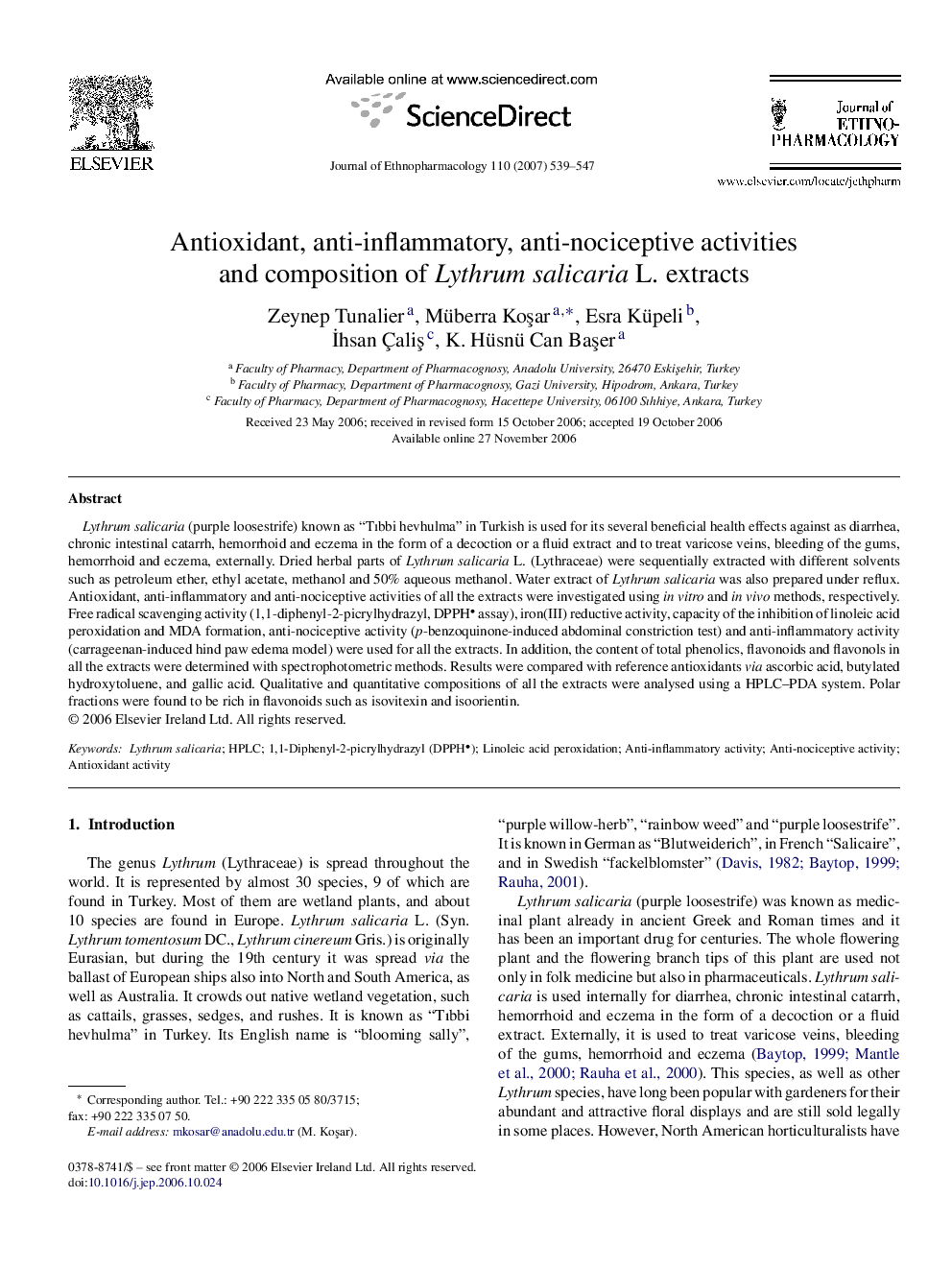| Article ID | Journal | Published Year | Pages | File Type |
|---|---|---|---|---|
| 2547341 | Journal of Ethnopharmacology | 2007 | 9 Pages |
Lythrum salicaria (purple loosestrife) known as “Tıbbi hevhulma” in Turkish is used for its several beneficial health effects against as diarrhea, chronic intestinal catarrh, hemorrhoid and eczema in the form of a decoction or a fluid extract and to treat varicose veins, bleeding of the gums, hemorrhoid and eczema, externally. Dried herbal parts of Lythrum salicaria L. (Lythraceae) were sequentially extracted with different solvents such as petroleum ether, ethyl acetate, methanol and 50% aqueous methanol. Water extract of Lythrum salicaria was also prepared under reflux. Antioxidant, anti-inflammatory and anti-nociceptive activities of all the extracts were investigated using in vitro and in vivo methods, respectively. Free radical scavenging activity (1,1-diphenyl-2-picrylhydrazyl, DPPH assay), iron(III) reductive activity, capacity of the inhibition of linoleic acid peroxidation and MDA formation, anti-nociceptive activity (p-benzoquinone-induced abdominal constriction test) and anti-inflammatory activity (carrageenan-induced hind paw edema model) were used for all the extracts. In addition, the content of total phenolics, flavonoids and flavonols in all the extracts were determined with spectrophotometric methods. Results were compared with reference antioxidants via ascorbic acid, butylated hydroxytoluene, and gallic acid. Qualitative and quantitative compositions of all the extracts were analysed using a HPLC–PDA system. Polar fractions were found to be rich in flavonoids such as isovitexin and isoorientin.
